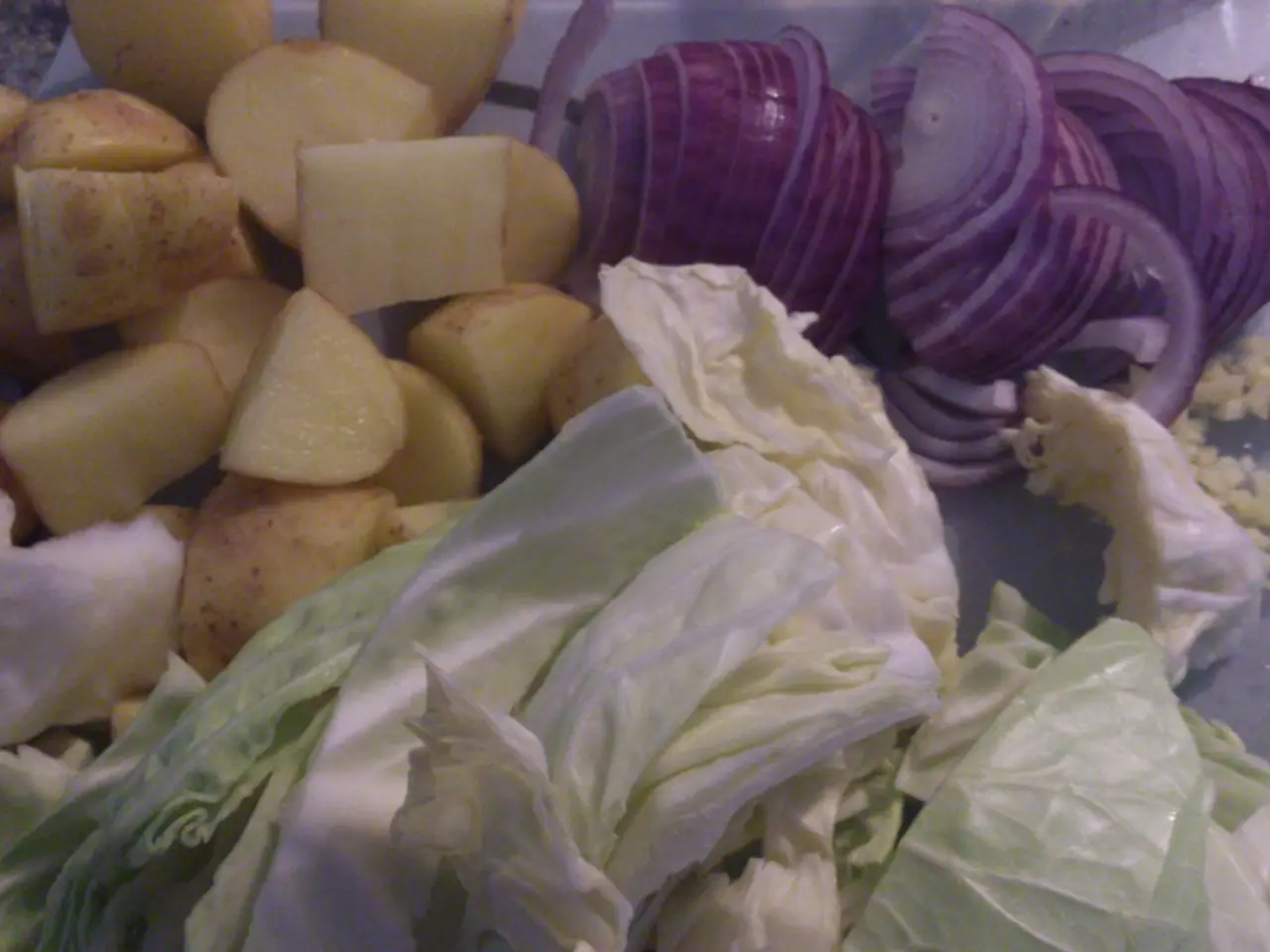Regrowing Vegetables from Scraps: 14 Options to Explore
Regrowing Kitchen Scraps: A Sustainable Way to Maintain a Kitchen Garden
In an effort to reduce waste and cultivate a steady supply of fresh produce, many home gardeners are discovering the art of regrowing kitchen scraps. By transforming common household items like leek bottoms, celery bases, and even garlic cloves, into thriving plants, it's possible to create a miniature kitchen garden.
Leek bottoms, green onions, and chives
To regrow leek bottoms, save about 2 inches of the root end and place it root side down in water, with the top sticking out. New shoots should appear in about a week, at which point they can be transferred to soil when they reach approximately 3 inches.
Green onions, or scallions, are among the easiest vegetables to regrow. Simply place the white root ends in a glass of water, with the tops exposed, and they will quickly regrow shoots. For continuous harvesting, repot them when necessary.
Chives can be regrown with minimal effort. Cut several inches of the base with roots, place in water or soil, and watch them regrow.
Basil, mint, and cilantro
Snip stems from these herbs and place them in water to root. Once rooted, transfer them to pots and provide them with plenty of light and regular watering for them to flourish.
Bok choy, romaine lettuce, and fennel
Place the base of bok choy in water in a well-lit area, and transplant it to a pot with soil after a week or two when new shoots appear. A stem from a head of romaine lettuce can be regrown in a bowl with water on a windowsill, producing new leaves in about 2 weeks. Fennel can be regrown by placing the bulb in a cup of water and exposing it to sunlight.
Garlic, carrot tops, and ginger
Garlic can regrow green shoots from peeled cloves. Place the cloves in a shallow dish with the pointed end up and cover with soil. Carrot tops can regrow greens from cut carrot tops in water. Place the tops in a dish with water and place in a sunny spot. Ginger root can take a few months to sprout and grow into a fully grown bulb, which can take 8 to 10 months. To regrow ginger, plant a piece of the rhizome in soil.
Potatoes and sweet potatoes
Potatoes can be regrown from scraps with eyes. The pieces should be left out for a couple of days to dry out before planting. Sweet potatoes can be regrown by placing them in a mason jar half-filled with water, changing the water periodically, and pulling off sprouts when they reach 4 to 5 inches in length.
Lemongrass
Lemongrass can be regrown by placing the root ends in a glass of water and transferring them to a pot of soil after about three weeks.
Mint
Mint can be easily propagated by putting a cutting in a glass of water instead of a pot of soil, allowing the roots to grow.
Mushrooms
Mushrooms can be tricky to grow, and within a few days, the stems will either start to sprout new heads or rot.
Key tips for regrowing kitchen scraps include using 2-3 inch cuttings or bases with roots or root ends, placing them in a sunny window or bright spot, keeping water fresh to avoid rot, transplanting to soil after initial regrowth for stronger plants, and harvesting continually to encourage more growth. This method not only reduces waste but also provides a steady supply of fresh vegetables and herbs within your sustainable kitchen garden.
Sources: 1. The Spruce Eats 2. One Green Planet 3. Garden Myths 4. GrowVeg 5. HGTV
- Leek bottoms, green onions, and chives can be regrown by placing the root ends in water and transferring them to soil when new shoots appear.
- Basil, mint, and cilantro can be regrown by snipping stems and placing them in water, then transferring them to pots.
- Bok choy, romaine lettuce, and fennel can be regrown from their bases in water before transplanting to soil.
- Garlic, carrot tops, and ginger can be regrown from peeled cloves, cut tops, and rhizome pieces, respectively.
- Potatoes and sweet potatoes can be regrown from scraps with eyes or by placing them in water, respectively.
- Lemongrass and mint can be regrown by placing the root ends in water before transferring them to soil or allowing roots to grow in water, respectively. Key tips for successful kitchen scrap regrowth include using appropriate cuttings or bases, placing them in a sunny spot, keeping water fresh, transplanting to soil after initial growth, and harvesting continuously for more growth. This method of regrowing kitchen scraps is a sustainable way to maintain a kitchen garden and reduce waste. (Sources: The Spruce Eats, One Green Planet, Garden Myths, GrowVeg, HGTV)








